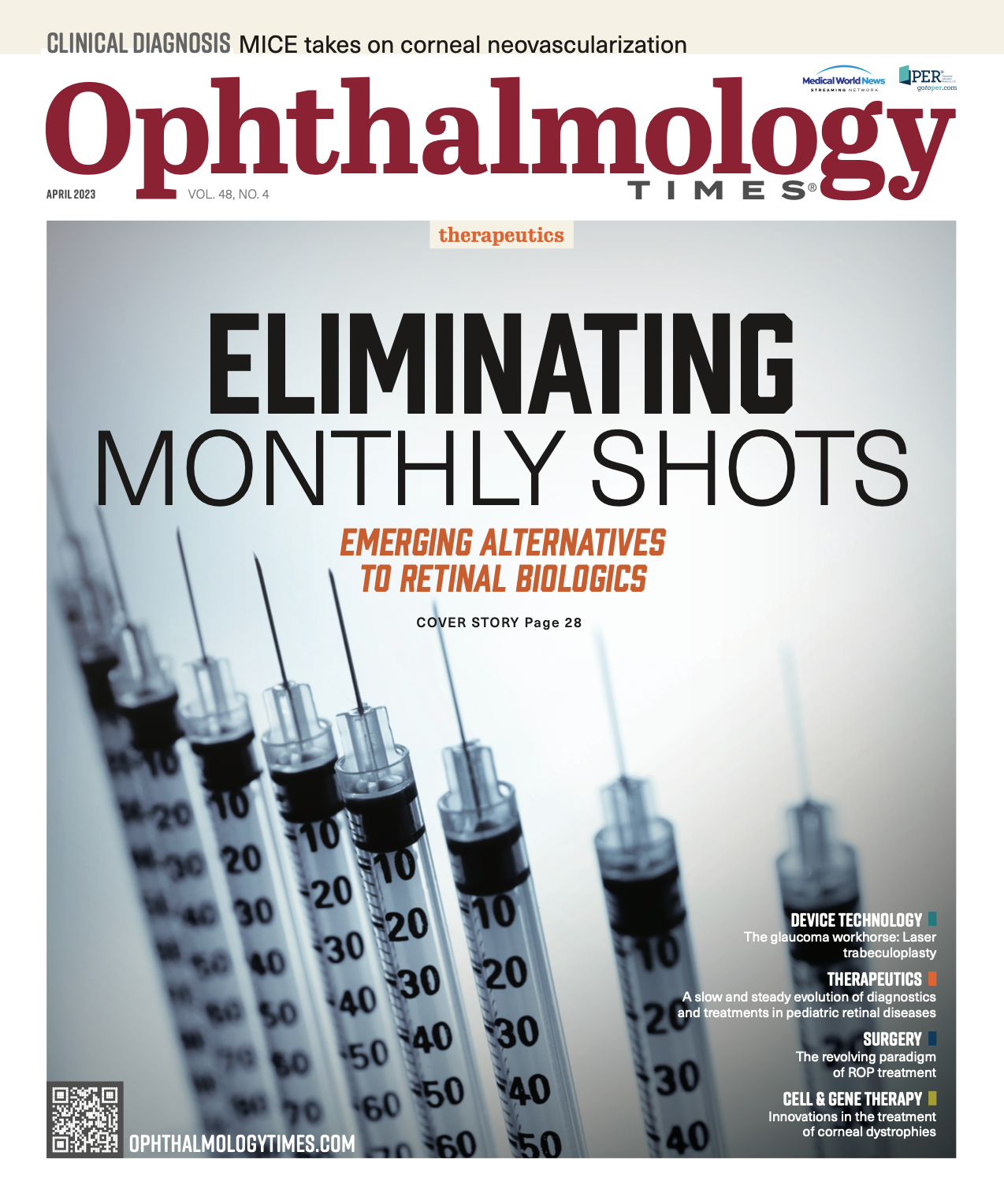Publication
Article
Digital Edition
The revolving paradigm of ROP treatment
Author(s):
Vitrectomy, lensectomy remain the primary surgical approaches for condition.
(Image Credit: AdobeStock/ondrooo)

The paradigm for treating retinopathy of prematurity (ROP) involves screening and medical treatment of patients with the goal of avoiding eye surgery, according to Hong-Uyen Hua, MD.
Although the screening and treatment of ROP have greatly improved since the condition was first described in the 1940s, cases in which surgical intervention is necessary are rare, according to Hua, a vitreoretinal surgery fellow at the Cleveland Clinic Cole Eye Institute, who spoke at the Virtual Vision Research Symposium.
Indications for surgical management
Surgery is indicated when ROP reaches stage 4 and beyond. As Hua explained, the approaches are lens-sparing vitrectomy for stage 4A eyes with a partial retinal detachment and an attached fovea and lensectomy-vitrectomy for both stage 4B eyes with foveal detachment and stage 5 eyes with total retinal detachment.
Progressive stage 4 ROP, she said, is characterized by 6 or more clock hours of ridge elevation (area of neovascularization), recurrent or persistent Plus disease (tortuous vessels) in 2 quadrants, and vitreous condensation/haze, vitreous hemorrhage or vitreous organization, and acute angles of posterior retinal veins that suggest peripheral traction.

Stage 5 disease includes total retinal detachment. According to the International Classification of Retinopathy of Prematurity (ICROP-3),1 stage 5A is characterized by a visible disc suggesting an open funnel, stage 5B by a disc that is not visible secondary to retrolental fibrovascular tissue or a closed-funnel detachment, and stage 5C by stage 5B characteristics plus anterior segment abnormalities.
ROP studies
For patients with stage 4A ROP, the goal of lens-sparing vitrectomy is to release vitreoretinal circumferential tractional components between the following structures: ridge and anterior eye (lens, ciliary body), ridge and peripheral retina extending to the ora serrata, and ridge and optic nerve. Surgical goals do not include complete removal of the vitreous or complete flattening of the retina.
A retrospective cohort study2 performed at the Cole Eye Institute compared lens-sparing vitrectomy performed with and without the use of a scleral buckle. Outcomes were similar in both groups, Hua reported, negating the need for a buckle.
The prognosis of lens-sparing vitrectomy for stage 4A ROP in infants with aggressive-posterior ROP is good. When performed early, the surgery was efficacious anatomically and functionally. The mean visual acuity was 20/80, and 80% of eyes had high myopia (mean, –11.25 diopters).3 In a second study, Hua said, the average logMAR-converted Snellen acuity was 20/58 after lens-sparing vitrectomy.4
For patients with stages 4B and 5 ROP, the goal of lensectomy with vitrectomy is complete release of anterior-posterior traction consideringthe more advanced detachment. In a study looking at stage 5 ROP detachments, the authors reported good structural outcome in almost 90% of patients with stage 5A disease, but no eyes with stage 5C were reattached.5
Hong-Uyen Hua, MD

Hong-Uyen Hua, MD
E: huah2@ccf.org
Hua is a vitreoretinal surgical fellow at the Cleveland Clinic Cole Eye Institute. She has no financial interest to disclose with respect to this subject matter.
References:
1. Chiang MF, Quinn GE, Fielder AR, et al. International Classification of retinopathy of prematurity, Third Edition. Ophthalmology. 2021;128(10):e51-e68. doi:10.1016/j.ophtha.2021.05.031
2. Sears JE, Sonnie C. Anatomic success of lens-sparing vitrectomy with and without scleral buckle for stage 4 retinopathy of prematurity. Am J Ophthalmol. 2007;143(5):810-813. doi:10.1016/j.ajo.2007.01.017
3. Macor S, Pignatto S, Capone A Jr, Piermarocchi S, Lanzetta P. Lens-sparing vitrectomy for stage 4A retinopathy of prematurity in infants with aggressive-posterior ROP: anatomic and functional results. Eur J Ophthalmol. 2021;31(4):2020-2026. doi:10.1177/1120672120946938
4. Prenner JL, Capone A Jr, Trese MT. Visual outcomes after lens-sparing vitrectomy for stage 4A retinopathy of prematurity. Ophthalmology. 2004;111(12):2271-2273. doi:10.1016/j.ophtha.2004.06.021
5. Mano F, Iwahashi C, Kuniyoshi K, Kusaka S. Structural outcome after surgery for stage 5 retinopathy of prematurity based on the new international classification: ICROP-3. Retina. 2022;42(10):1950-1957. doi:10.1097/IAE.0000000000003541

Newsletter
Don’t miss out—get Ophthalmology Times updates on the latest clinical advancements and expert interviews, straight to your inbox.





